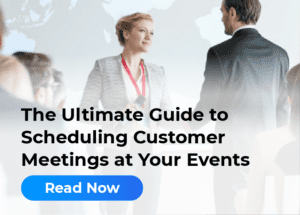Choosing to go for an event starts off as an expense but if executed successfully, turns out to be a smart investment that has the potential to reel in a large chunk of business. They offer companies an excellent opportunity to meet and converse with a highly segmented target audience. They also offer a great venue to showcase and create awareness around the product. For these reasons, companies have been setting aside larger portions of their marketing budgets exclusively for trade show exhibits.
Earlier, companies centered their event strategy on direct-selling. But as time passed, it became apparent that the scope of direct-selling at events was very limited as the decision-making process became increasingly complicated. So companies started prioritizing the process of lead generation over direct selling. Initially, companies collected visiting cards from prospects at events and collaborated to communicate with customers. But this method soon became outdated because a large number of contacts were not acted upon.
What started off with sales representatives collecting visiting cards and manually keeping track of customer information was soon replaced with badge scanners coupled with a CRM platform. But what do event marketers do with all the information from scanning badges and how can this information be used more efficiently to get the most out of large scale events? In this blog, we run you through the badge scanning process and how to collect and utilize lead information effectively.
The challenge
B2B Events and trade shows are frantic times for sales reps. They meet scores of people over the span of the event and more often than not, lose track of who they meet and what they talk about. So one of the most challenging aspects of the job description is to keep track of lead information and conversations.
When badge scanners became available, they were a part of the event organizer’s portfolio. Sales representatives would scan badges at their booths and talk to customers about the process. After the event, event organizers would collect the badge scanners and work on creating excel sheets with all the lead information. A week or so later, sales reps would receive the information and start to manually import the data into the CRM software. Therefore, it would take a week and a half for the sales team to finally start working on the qualification and follow-up processes. So for sales reps, this is not just a waste of time. It also means that they would also risk leads going cold.
The solution
Luckily for event marketers, technology caught up quick. The industry now has numerous solutions to this problem now. Now, with API integrations, every time an attendee badge is scanned, his/her information flows directly into the CRM software or into the meeting management interface. In addition to the information being collected, customers should also be able to create a meeting, add themselves to an existing meeting, and check themselves into meetings. With the data collected, you can also analyze meeting data by filtering attendee data through badge and scanner. This way, you can increase the number of customer meetings scheduled and drive up the sales pipeline.
Footnote: There are two important aspects while collecting leads at events. Keeping them in mind can go a long way in successfully reaching the objectives of your strategy.
Qualify early
Sales representatives often chase prospects that may not qualify as a substantial lead. With a little trade show experience, event marketers learn what to look for. So the first step would be to clearly map out the customer persona. Once the behavioral aspects of prospects become clear, it becomes easier to incorporate that into the prospecting process. Apart from engaging walk-ins, it is important to only collect information from those prospects that fit the customer persona and are most ready to do business.
Swift follow-up
At events, about 85% of badge scanned do not see any follow through. This means that a major portion of effort taken to collect leads goes for a waste. After the event concludes, customers rarely remember meeting you or much of the conversation you’ve had. So, an effective follow-up process relies heavily on timing. The faster you reach out to customers after the event, the warmer the leads. A swift follow-up also ensures that you stay on top of the customer’s mind.
Related: Structuring a fail-proof post-event plan for sales advancement
At trade shows, time is of the essence. Customers are short of time and they have a brief window within which they can be engaged. So the badge scanner should also be able collect lead information seamlessly and . This integration not only eliminates the need to wait for event organizers to get back with the lead data but also helps sales teams schedule more meetings and maximize the sales pipeline.



